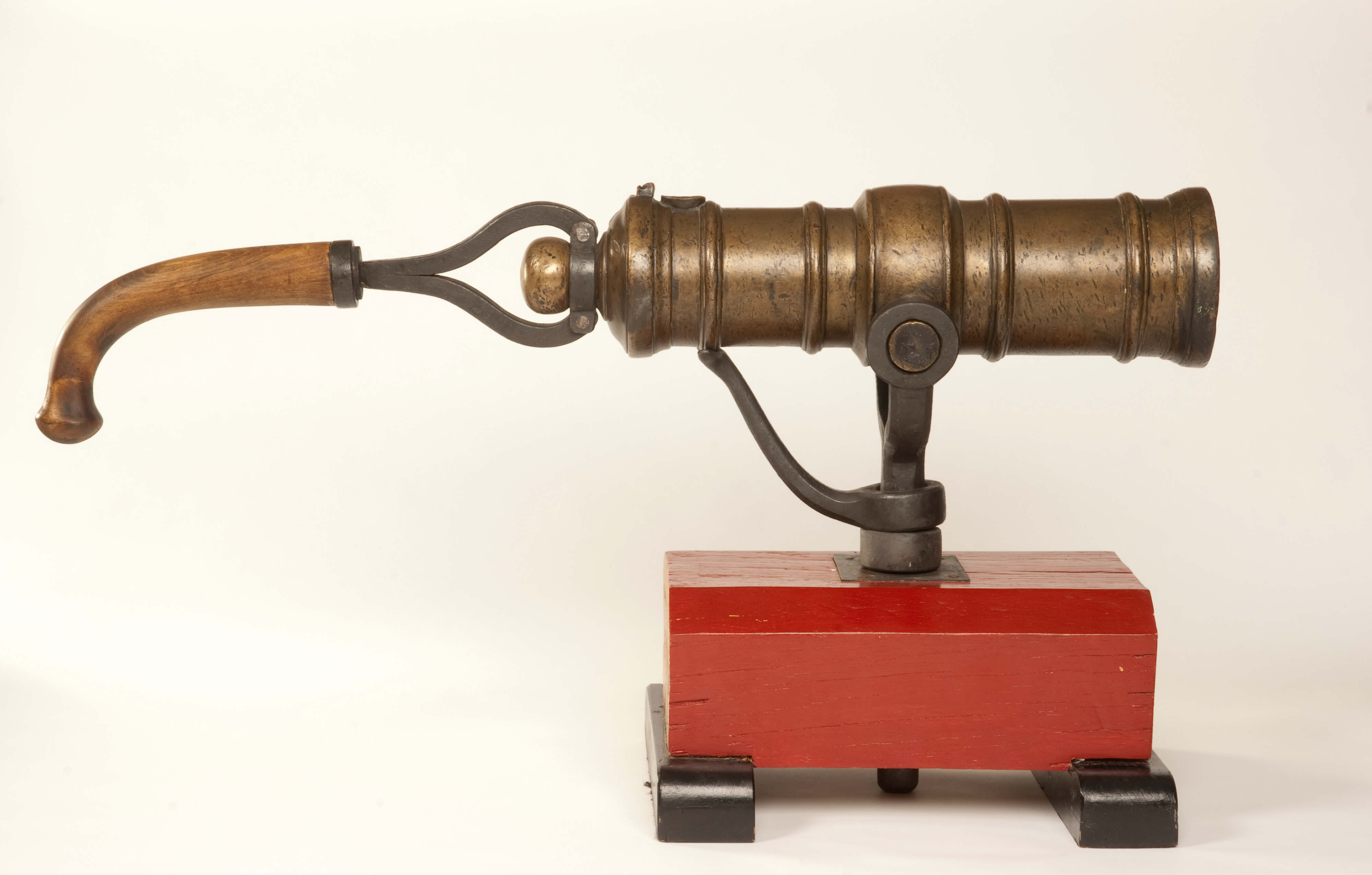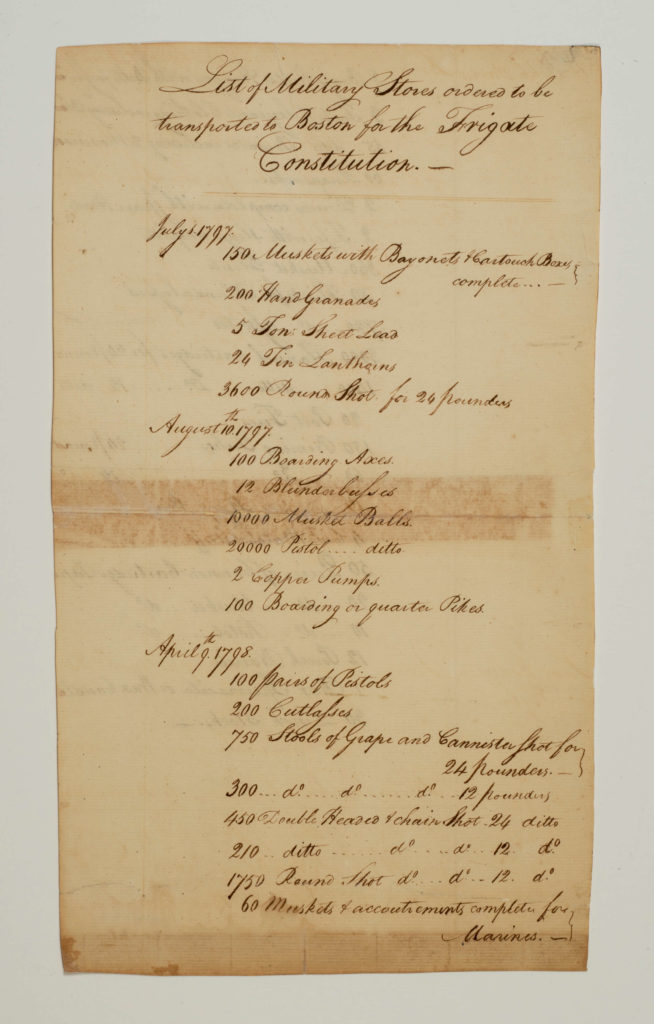
Swivel Howitzer
This is a short-barreled brass gun with a 3-inch bore. Guns of this size went by a number of different names, but were most often referred to as either “swivel howitzers” or “cohorns.” By most accounts, 18th century howitzers of this type were made for the United States Navy by Paul Revere of Boston or Daniel King of Pennsylvania, but it is unclear who manufactured this particular gun. The only marking found on this howitzer is “U.S.” stamped into the end of one of the trunnions (the “axles” on which the gun barrel could be adjusted upward or downward when aiming and firing). King gave all of his guns a maker’s mark. This gun does not have King’s mark, nor does it match the pattern of any King guns. It also lacks any markings that would confirm it as a Revere make. However, the gun is similar in design to the other probable Revere weapons, including a ship’s cannon, which also has no maker’s mark but bears an American eagle. There is also historical documentation that shows Revere’s howitzers had a 3-inch bore like this one, while King’s had a 2¾-inch bore.
Regardless of the maker, this howitzer shows signs of an eventful service life. The gun still has lacquer in many of the recesses, indicating that it was once heavily japanned (japanning was the process of coating an item, particularly weapons, in a heavy black lacquer, thus protecting the item from the elements). The howitzer was found without the original mount or tiller. These pieces were probably broken, reused, or melted down for the iron from which they were made.
A notable feature of this howitzer, though an easily overlooked one, is that it has been spiked. Spiking was used as a last resort before a gun fell into enemy hands. It involved driving a metal object into the touch-hole, thus rendering the gun useless. In the case of this howitzer, it was done with a nail. Exactly why this gun was spiked is unclear. It may have been in danger of capture, or disabled so that it could be put on display.
There are many firsthand accounts of guns such as this being used on the fighting tops of USS Constitution and other frigates. From this high perch, the guns would be fired down on the opposing crew. Reports suggest that some American captains also had the guns mounted on the front of the ship’s boats to defend landing parties. While howitzers could fire grenades, this practice was extremely dangerous as the gun could easily explode. Howitzers of this size were more often used like a big shotgun, firing canister or grape shot. From the fighting tops, a howitzer firing canister shot could hit a large swath of the enemy deck. The effectiveness of howitzers kept them in use until just before the American Civil War, when it was decided that the use of any firearms in the tops was too dangerous to be worthwhile.
Date Created
1794-1801
Medium
Wood, Brass, Iron
Dimensions
[H]17 7/8 in. [D]12 in.
Catalog Number
975.2a,b
Credit Line
USS Constitution Museum. Mr. Sherman Morss Bequest.
Terms of Use

This work is licensed under a Creative Commons Attribution-NonCommercial-NoDerivs 3.0 Unported License
